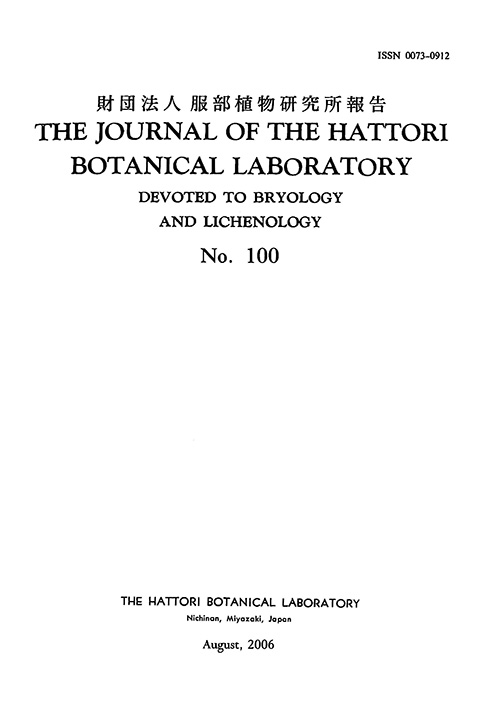Volume 68
Displaying 1-14 of 14 articles from this issue
- |<
- <
- 1
- >
- >|
-
1990 Volume 68 Pages 1-192
Published: August 07, 1990
Released on J-STAGE: August 04, 2021
Download PDF (75218K) -
1990 Volume 68 Pages 193-234
Published: August 07, 1990
Released on J-STAGE: August 04, 2021
Download PDF (18091K) -
1990 Volume 68 Pages 235-238
Published: August 07, 1990
Released on J-STAGE: August 04, 2021
Download PDF (1140K) -
1990 Volume 68 Pages 239-253
Published: August 07, 1990
Released on J-STAGE: August 04, 2021
Download PDF (6333K) -
1990 Volume 68 Pages 255-267
Published: August 07, 1990
Released on J-STAGE: August 04, 2021
Download PDF (4078K) -
1990 Volume 68 Pages 269-278
Published: August 07, 1990
Released on J-STAGE: August 04, 2021
Download PDF (4147K) -
1990 Volume 68 Pages 279-284
Published: August 07, 1990
Released on J-STAGE: August 04, 2021
Download PDF (2096K) -
1990 Volume 68 Pages 285-291
Published: August 07, 1990
Released on J-STAGE: August 04, 2021
Download PDF (2560K) -
1990 Volume 68 Pages 293-302
Published: August 07, 1990
Released on J-STAGE: August 04, 2021
Download PDF (4462K) -
1990 Volume 68 Pages 303-315
Published: August 07, 1990
Released on J-STAGE: August 04, 2021
Download PDF (5331K) -
1990 Volume 68 Pages 317-366
Published: August 07, 1990
Released on J-STAGE: August 04, 2021
Download PDF (18879K) -
1990 Volume 68 Pages 367-380
Published: August 07, 1990
Released on J-STAGE: August 04, 2021
Download PDF (5086K) -
1990 Volume 68 Pages 381-440
Published: August 07, 1990
Released on J-STAGE: August 04, 2021
Download PDF (21342K) -
1990 Volume 68 Pages 441-447
Published: August 07, 1990
Released on J-STAGE: August 04, 2021
Download PDF (2600K)
- |<
- <
- 1
- >
- >|
